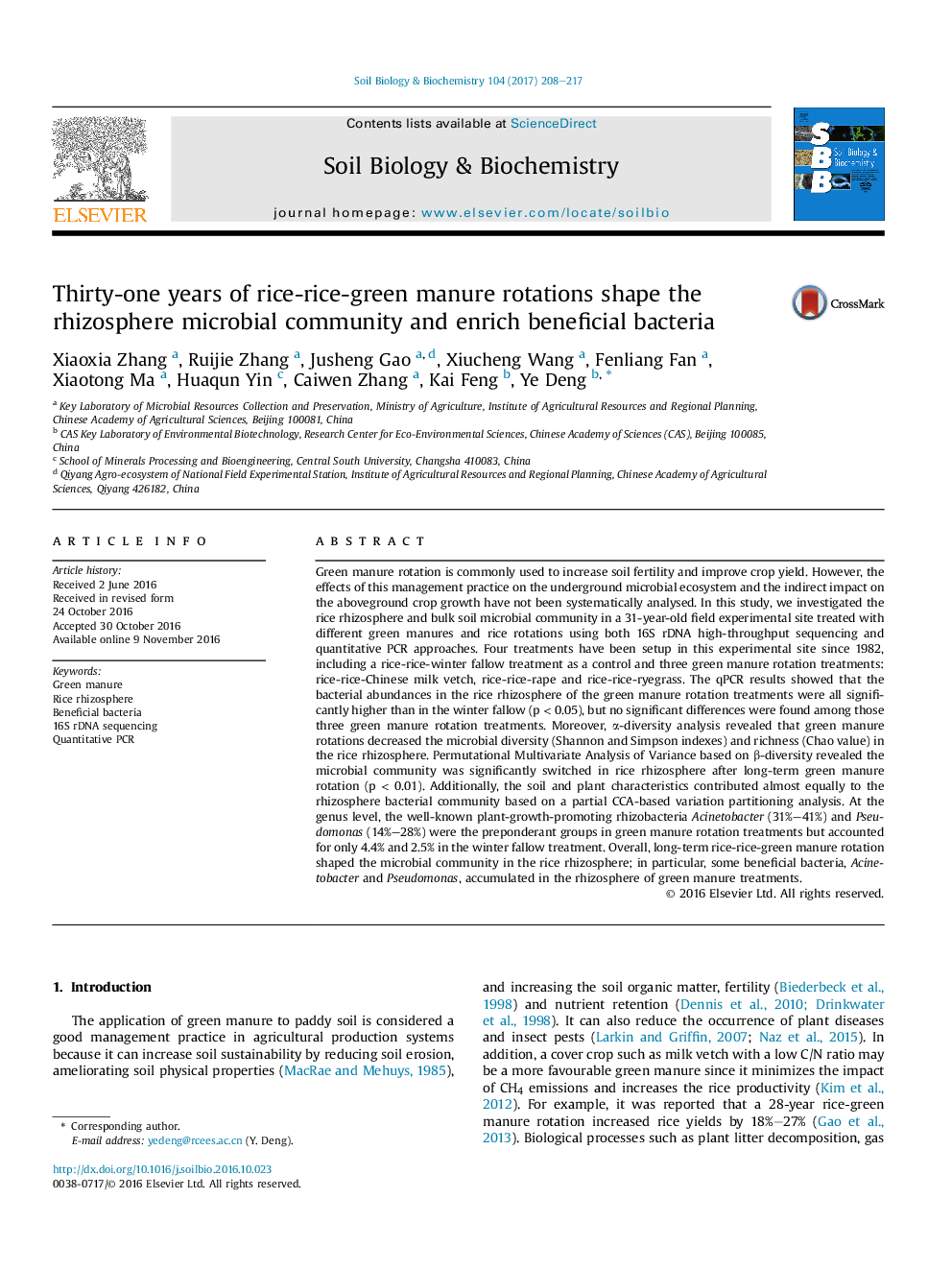| کد مقاله | کد نشریه | سال انتشار | مقاله انگلیسی | نسخه تمام متن |
|---|---|---|---|---|
| 5516461 | 1542580 | 2017 | 10 صفحه PDF | دانلود رایگان |
• Long-term green manure increased the bacterial abundance in bulk soil and rhizosphere.
• The microbial community in rhizosphere was altered by both soil and plant changes.
• Acinetobacter and Pseudomonas accumulated in rhizosphere of green manure treatments.
Green manure rotation is commonly used to increase soil fertility and improve crop yield. However, the effects of this management practice on the underground microbial ecosystem and the indirect impact on the aboveground crop growth have not been systematically analysed. In this study, we investigated the rice rhizosphere and bulk soil microbial community in a 31-year-old field experimental site treated with different green manures and rice rotations using both 16S rDNA high-throughput sequencing and quantitative PCR approaches. Four treatments have been setup in this experimental site since 1982, including a rice-rice-winter fallow treatment as a control and three green manure rotation treatments: rice-rice-Chinese milk vetch, rice-rice-rape and rice-rice-ryegrass. The qPCR results showed that the bacterial abundances in the rice rhizosphere of the green manure rotation treatments were all significantly higher than in the winter fallow (p < 0.05), but no significant differences were found among those three green manure rotation treatments. Moreover, α-diversity analysis revealed that green manure rotations decreased the microbial diversity (Shannon and Simpson indexes) and richness (Chao value) in the rice rhizosphere. Permutational Multivariate Analysis of Variance based on β-diversity revealed the microbial community was significantly switched in rice rhizosphere after long-term green manure rotation (p < 0.01). Additionally, the soil and plant characteristics contributed almost equally to the rhizosphere bacterial community based on a partial CCA-based variation partitioning analysis. At the genus level, the well-known plant-growth-promoting rhizobacteria Acinetobacter (31%–41%) and Pseudomonas (14%–28%) were the preponderant groups in green manure rotation treatments but accounted for only 4.4% and 2.5% in the winter fallow treatment. Overall, long-term rice-rice-green manure rotation shaped the microbial community in the rice rhizosphere; in particular, some beneficial bacteria, Acinetobacter and Pseudomonas, accumulated in the rhizosphere of green manure treatments.
Journal: Soil Biology and Biochemistry - Volume 104, January 2017, Pages 208–217
